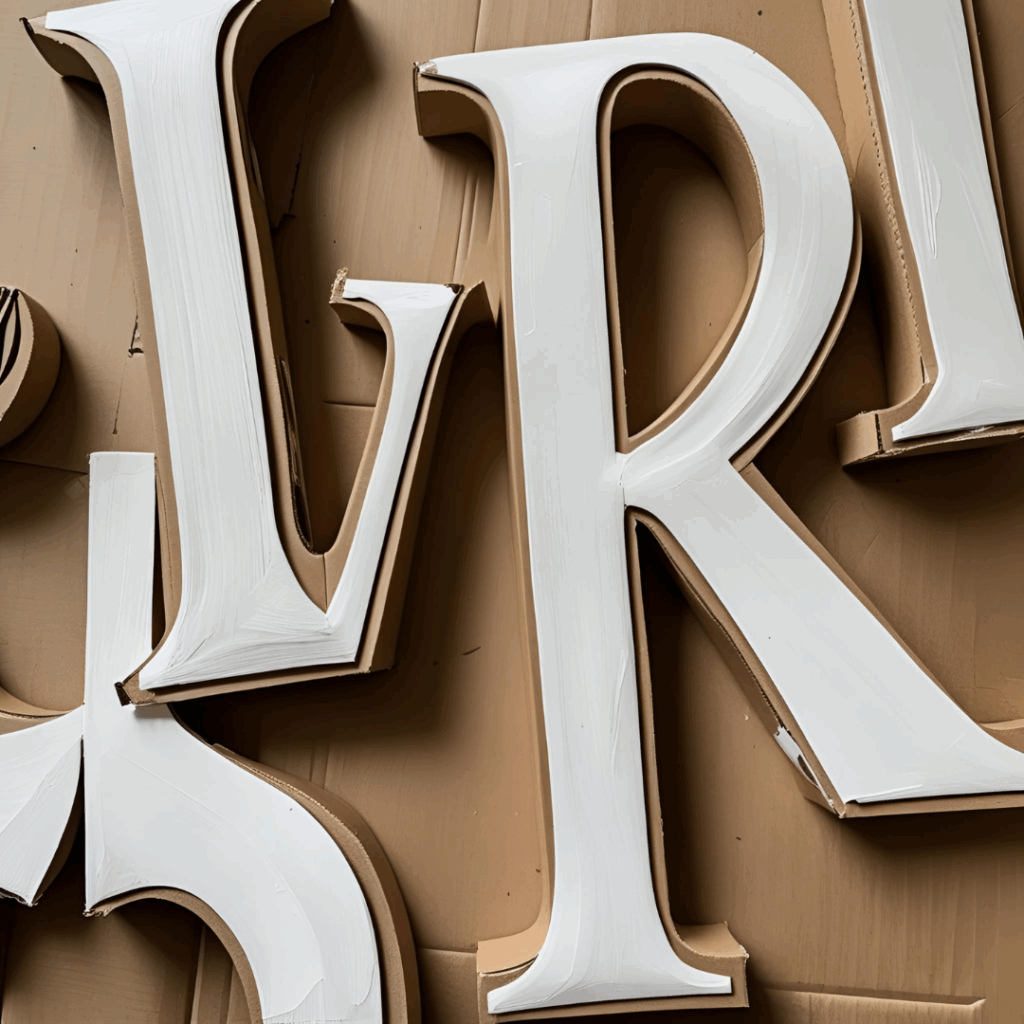Turning cardboard into art and marketing strategy is not just a passing trend; it’s a smart and sustainable way to highlight your store, communicate your values, and attract customers with eye-catching visuals and unbeatable cost-effectiveness.
In this comprehensive guide, you’ll dive into the world of artistic cardboard, learning not only how to create stunning displays but also how to master finishing techniques that deliver a professional result. Get ready to explore innovative ideas for seasonal campaigns that truly engage your audience and inspiring examples that prove the power of this material.
Why Cardboard Is the Smart Choice for Your Display Window
Cardboard is more than just packaging material. It’s affordable, lightweight, easy to handle, and incredibly versatile—able to be cut, shaped, painted, and transformed into virtually any form your imagination allows. By choosing cardboard, your brand also reinforces a genuine commitment to sustainability—a value increasingly important to modern consumers.
Check out the top benefits that make artistic cardboard the ideal choice for your window displays:
- Unbeatable Cost-Benefit: Significantly reduces costs compared to wood, MDF, or acrylic, freeing up budget for other areas of your business.
- Simplified Logistics: Lightweight and often collapsible, it’s easier to transport and store, saving time and space.
- True Sustainability: A recyclable and biodegradable material that minimizes environmental impact and resonates with eco-conscious audiences.
- Unlimited Customization: Adapts to any style, theme, or campaign concept, allowing you to create truly unique and memorable displays.

How to Create Impactful Displays on a Tight Budget
Even with limited funds, you can still create displays that grab attention and spark curiosity. The secret lies in combining creativity, smart composition, and attention to detail.
1. Play with 3D Volumes and Layers
Create depth and movement! 3D elements made from layered cardboard add visual richness. Use different depths to guide the viewer’s eyes to your main product or message. This simple technique elevates ordinary material into something sophisticated.
2. Contrast: The Customer’s Visual Guide
Cardboard’s neutral tone is a perfect blank canvas. Use it to your advantage! Introduce vibrant colors (like intense red, electric blue, or shimmering gold) in strategic spots to create strong visual contrast. This burst of color instantly draws the eye to your display’s focal point.
3. Lighting as a Strategic Ally
Lighting can completely transform a window display. Try using LED spotlights to highlight your cardboard structures. Light not only emphasizes features but also casts dramatic shadows that enhance the material’s texture, creating a captivating play of light and shadow.
4. Celebrate the Handmade Touch
In a world of mass production, handcrafted elements stand out. Use precise hand-cut shapes, painted lettering, layered textures, and the natural beauty of cardboard. This authentic and unique feel communicates care and originality—turning rustic into the centerpiece charm.
Essential Techniques for a Professional Finish
Forget the idea that cardboard has to look fragile. With the right techniques, you can achieve a result that rivals more expensive materials, conveying both elegance and durability.
Structural Reinforcement: Strength and Durability
For larger elements (like mannequins, big panels, or block letters), use double or honeycomb cardboard. These inner structures provide strength and stability without adding much weight—perfect for pieces that need to stay upright for longer periods.
Think of building a cardboard skeleton for bigger designs, just like a model. It adds support and prevents deformation.
Painting and Coating: The Skin of Your Creation
- Acrylic or Spray Paint: For a smooth, vibrant finish. Acrylic offers more control and detail, while spray paint is perfect for large surfaces and a sleek look.
- Textures and Coatings: Go beyond paint! Use textured papers, kraft paper, fabrics (like jute or linen), or even contact paper applied with white glue or spray adhesive for a sensory and unique finish.
- Refined Techniques: Try decoupage (gluing decorative paper or napkins) or stencil painting to add precision patterns or graphics.
Precise Cutting and Assembly: The Key to Success
- Sharp Tools and Guides: Always use sharp utility knives and metal rulers to ensure clean, straight cuts. A dull blade tears the cardboard and compromises the finish.
- Laser Cutting: For more complex or duplicate pieces, consider using laser cutters. They offer millimetric precision and flawless results.
Edge Finishing: The Final Touch That Makes the Difference
- Edge Sealing: For a professional look and to prevent fraying, use kraft tape, paper adhesive tape, or even acrylic filler to seal visible edges. This creates a smooth surface ready for paint or coating.
- Light Sanding: After sealing, lightly sand the edges to remove imperfections and ensure a polished result.
Seasonal Display Inspiration with Cardboard
Holidays are golden opportunities to innovate with cardboard, creating scenes that captivate and connect with your customers.
Christmas: Magic Meets Sustainability
- Cardboard Trees: Layered cardboard trees with cut-out stars or 3D pine tree effects.
- Festive Scenes: Sleighs, elegant reindeer, and stacks of 3D gift boxes.
- Luminous Signs: High-relief “Merry Christmas” or “Happy Holidays” signs with LED lighting.
- Decorations: Wreaths and delicate ornaments with gold or silver details.



Mother’s Day: Heartfelt Cardboard
- Heart Frames: Large cardboard heart frames decorated with delicate paper flowers.
- Silhouettes: Stylized female silhouettes with loving messages.
- Theme Panels: Panels with phrases like “Mother’s Love” in calligraphic letters, like greeting cards.
Easter: Sweet and Lighthearted
- 3D Bunnies: Jumping bunnies in 3D decorated with cotton, felt, or vibrant paint.
- Giant Eggs: Giant eggs with collages, paint, or textured “shell” finishes.
- Themed Environment: “Grass” made of shredded green kraft paper, creating a playful setting.
Valentine’s Day: Passion in Every Detail
- Hanging Hearts: Multiple hanging hearts with romantic quotes connecting each one.
- Giant Love Letters: Vintage-style letter panels with your store’s seal.
- Oversized Gifts: Cardboard boxes decorated like real presents, complete with bows and ribbons.
Black Friday: Impact and Urgency
- Graphic Panels: “Flash Sale” signs with bold designs and strong contrast (black, yellow, red).
- Giant Price Tags: Huge cardboard price tags highlighting discounts.
- Word Clouds: Hanging cardboard clouds with keywords like “Offer,” “Sale,” “Last Units,” creating urgency.
Real-World Inspiration: Cardboard in Action
Entrepreneurs and brands around the world have already embraced artistic cardboard as a creative and sustainable solution for attractive displays.
1. Independent Clothing Stores
Local brands use the contrast between rustic cardboard and refined fashion, crafting cardboard mannequins that stand out. With the right lighting, the result is modern, minimalist, and highly impactful—expressing a brand with personality and eco-awareness.
2. Stationery and Craft Stores
With easy access to materials, these stores become true creativity playgrounds. Entire scenes are built—fairy tale castles, detailed holiday landscapes, or even miniature vibrant cities. All made from recycled cardboard, showcasing the very material they sell.
3. Fairs and Pop-ups: Practical, Stylish Solutions
Temporary exhibitors often turn to cardboard for its practicality. Visual identity panels, product displays, and even furniture like tables and benches are made from cardboard—lightweight, attractive, and best of all, easy to transport and reuse. It’s the perfect combo of function and design.
Frequently Asked Questions (FAQ) About Cardboard Displays
Is cardboard strong enough for outdoor displays?
Standard cardboard is sensitive to moisture and wind. However, it can be treated with waterproof varnish or laminated for short outdoor use or protected environments. Indoors, durability is excellent—your displays can last for months.
What’s the best type of cardboard for artistic displays?
For stronger structures, double corrugated cardboard is a great option. Foam board is light, rigid, and perfect for precise base elements. For large builds or robust designs, honeycomb cardboard is the most suitable.
Can I reuse cardboard from previous displays?
Absolutely! Reuse is one of cardboard’s biggest advantages. With minor repairs (white glue for joins, paint touch-ups, or new coverings), you can breathe new life into your pieces—saving money and reinforcing your eco appeal.
How long does it take to build a cardboard display?
With good planning, a clear design, and the right materials, a medium-sized display can be created in 1 to 3 days. Prototypes or simple items like letters or small props can be made in just a few hours.
Final Thoughts: Your Display, Your Impact
Artistic cardboard is more than a trend—it’s a powerful tool for those who want to innovate with creativity, environmental awareness, and smart spending. By investing in this material, you communicate not only an attractive visual aesthetic but also your brand’s core values in an authentic and memorable way.
With the right techniques, plenty of inspiration, and the courage to experiment, your displays won’t just stand out visually—they’ll also leave a lasting, positive impression on your customers. All without breaking the bank—or harming the planet.
What message will your next cardboard display share with the world? Share your ideas and challenges with us!







